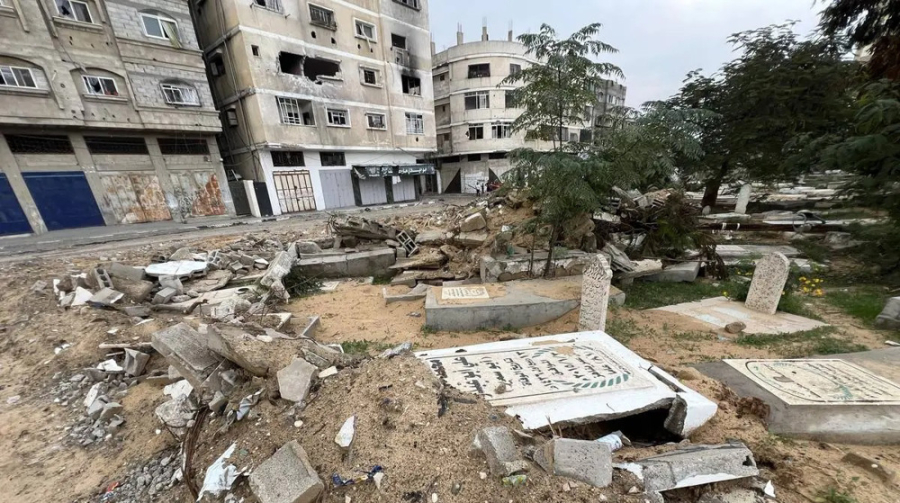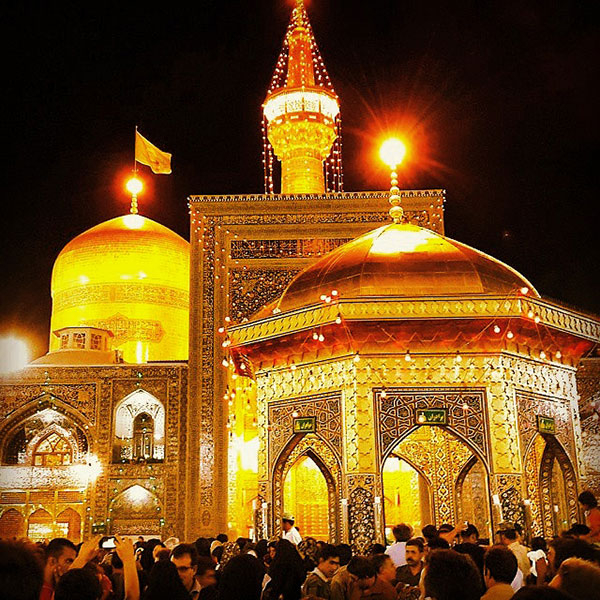The Israeli regime has committed 9,905 massacres in the Gaza Strip, including 7,160 attacks on Palestinian families, since the events of October 7, 2023.
The total number of martyrs and missing persons has reached 55,758, including 17,712 children, 12,136 women, and 5,444 martyrs from 1,410 Palestinian families who were completely wiped out.
The report also detailed the impact on the besieged Palestinian territory's medical sector, with 1,059 medical workers and 88 civil defense members martyred, 34 hospitals and 80 health centers shut down, and 162 health institutions and 135 ambulances targeted.
The Israeli occupation forces buried a large number of Palestinian victims inside hospitals, from which at least 520 bodies of martyrs were recovered while others remain under the rubble.
Total infrastructure damage in the Gaza Strip is estimated at 86 percent, including the destruction of 160,500 family homes and 212 shelters, estimated at a total of $37 billion.
Among the data often disregarded is that of 19 of 60 cemeteries in the territory that have been totally destroyed and 2,300 martyrs' bodies stolen, an increase from the 2,000 reported in August.
In November last year, after the Israeli warplanes rained bombs on a cemetery in Deir al-Balah, a Palestinian man took ti X, formerly Twitter, to give vent to his anger and frustration.
“Israel doesn't even want you to have the luxury of having your family visit your grave,” he wrote.
Destroyed cemeteries
At the beginning of this year, international media and human rights organizations published multiple reports about the systematic destruction of multiple cemeteries throughout the Gaza Strip.
A gravedigger in Deir al-Balah was quoted as saying that he buried a total of 137 bodies in a random mass grave on a single day as the cemetery reached its maximum capacity.
UN Secretary-General Antonio Guterres also said that Gaza had become a "graveyard" for hundreds of Palestinian children each day amid the Tel Aviv regime’s refusal to announce a ceasefire.
By verifying photos, videos, satellite images and testimonies, it can be revealed that in Gaza City alone, a total of nine cemeteries were destroyed in the first three months of the Israeli invasion.
Some of those cemeteries were newly created during the ongoing war owing to the excessive number of fatalities and the inability to access main cemeteries in some parts of city.
One of them, the al-Batsh cemetery next to al-Shifa Hospital, located in the neighborhood of northern Rimal in Gaza City, was subjected to complete leveling by Israeli military bulldozers and the majority of the bodies and tombstones were removed, dismembered and looted.
Euro-Med Monitor documented the same Israeli practice at the Ali bin Marwan cemetery in the east, the Beit Hanoun cemetery in the north, the Sheikh Radwan cemetery in the northwest, and the Sheikh Shaaban cemetery in the central-eastern part of the city.
The Geneva-based rights group reported that Israeli military personnel stormed a cemetery in the al-Tuffah neighborhood, not specifying whether it was the Ali bin Marwan cemetery or another one, and dug up more than a thousand graves, removing over 150 freshly buried bodies.
Witnesses confirmed the deliberate leveling and exhumation of bodies from graves at the Beit Hanoun cemetery, as well as the targeted destruction of graves at Sheikh Shaaban cemetery with Israeli military vehicles trampling over the dead bodies.
The Christian cemetery of St. Porphyrius Church was also devastated by the indiscriminate Israeli airstrikes, and similar acts of destruction and desecration were also recorded at the Sheikh Ijlin cemetery and in the Shujaiya neighborhood.
Satellite images reveal the scale of destruction of the Tunisian cemetery in Shujaiya, specifically excavations, parked armored vehicles and the use of the site as a temporary military set-up.
Other cemeteries across Gaza where similar cases of destruction and theft of dead bodies have been documented include the al-Shuhada cemetery in Beit Lahia, the al-Falluja cemetery in Jabalia, the Khan Yunis central cemetery, the al-Qassam cemetery in Nuseirat, the Bani Suheila and Bureij cemeteries.
Limited damage from waves of bombings and shelling was also reported at dozens of other cemeteries, which in some cases resulted in bodies buried in shallow graves due to emergency conditions coming to the surface.
Israeli systematic destruction of cemeteries and theft of dead bodies does not include a number of similar cases involving mass graves, estimated at more than 120 throughout the Gaza Strip.
At the beginning of this year, South Africa raised the Israeli destruction of Gaza cemeteries as part of its case at the Hague-based International Court of Justice (ICJ), arguing that the Israeli regime violated the 1948 Genocide Convention.
Euro-Med Monitor also emphasized that the regime has not spared even the dead in its genocidal war on Gazans, in flagrant violation of the principles of international humanitarian law and the rules of war about the protection of cemeteries during armed conflicts, including the Hague Conventions and the 1949 Geneva Conventions.
Disturbing testimonies
Palestinian testimonies to local and international media confirm that Israeli genocidal actions are not isolated cases nor misconduct of a handful of individuals, but the desecration of graves and the theft of Palestinian dead bodies is an organized phenomenon.
Speaking to Euro-Med Monitor, a Gaza City resident described his and his family's shock when they learned that the body of his buried 20-year-old brother had disappeared from the al-Batsh cemetery.
"The Israeli army not only killed my brother but also went so far as to deny my family any opportunity to visit his grave," he was quoted as saying by the human rights group.
Another resident of Beit Hanoun testified that he and his fellow citizens saw the Israeli army digging up certain graves in the city cemetery and removing bodies and that due to the complete bulldozing, it became impossible to identify the remaining dead bodies.
Identical testimonies were given to Arab media months later by family members from Jabalia who, after the Israeli army withdrew, found an empty family grave in a cemetery near the Indonesian hospital.
They said the bodies of the recently deceased were stolen from multiple graves left open, and that eyewitnesses saw the Israeli theft covertly because soldiers have a habit of shooting at them.
Horrifying testimony also came from the Nuseirat refugee camp in November, where a woman revealed that after an Israeli incursion, she had found her sister's grave in the al-Qassam cemetery dug up and desecrated, with her head sticking out of the ground.
Equally disturbing are the testimonies of innumerable mass graves where the same Israeli acts of desecration and theft have been recorded.
In April, Palestinian Health Ministry spokesman Ashraf al-Qudra reported that dozens of bodies unearthed from the mass graves at Nasser Hospital in Khan Younis, southern Gaza Strip, were decapitated and had their organs and skins removed.
Paramedics and rescue teams who participated in recovering around 400 bodies of civilians from these mass graves reported that some bodies were mutilated with their stomachs open and stitched up, arguing that it was organ theft.
Israeli lame justifications
The Israeli regime's reactions to the aforementioned reports of cemetery destruction and body theft show that they have attempted to ignore, cover-up, or offer false justifications for their actions.
After the first published analysis of the cemeteries' destruction in December last year, journalists from the New York Times requested comment from the Israeli military but received no response.
New York Times, without deeper scrutiny, bought the lame argument as reflected in its reportage.
A month later, after a CNN investigation into the destruction of Palestinian cemeteries, the regime said they "had no choice" but to target cemeteries, falsely accusing the Gaza-based Hamas resistance movement of using them for military purposes.
They tried to justify the extensive digging of the Beit Hanoun cemetery near Khan Yunis city by claiming that there was a tunnel underneath with a Hamas command center.
CNN reporters were allowed a brief visit to the cemetery, after which they reported that despite their search, they were unable to find any tunnel entrance at that location and thus verify the Israeli claims.
The Israeli army took their reporter through an off-perimeter tunnel to an underground shelter they claimed was located under a cemetery, which CNN also questioned.
Press TV website


















